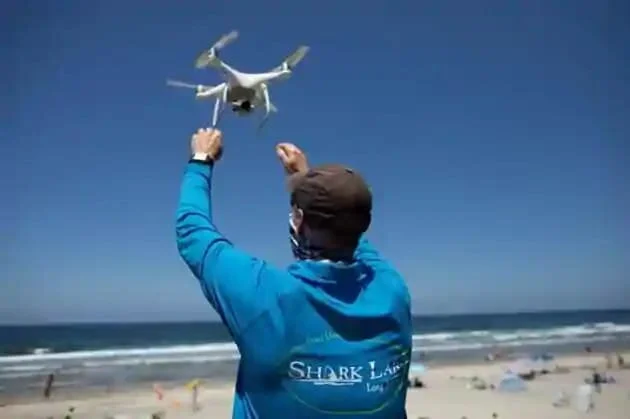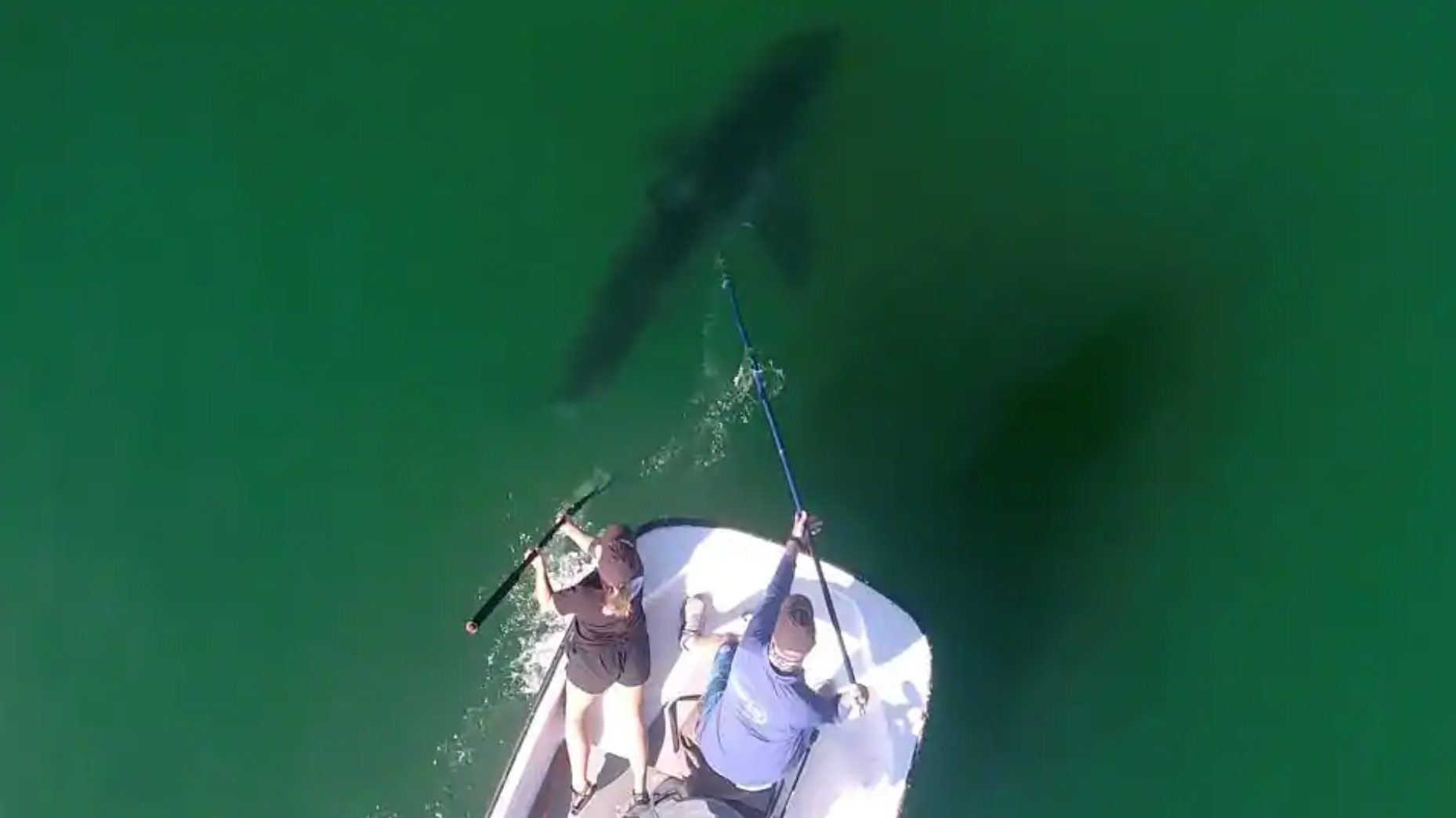Show Me The Way To Go Drone
Shark Lab researchers in California have been using drones to count the number of great white sharks along the coast, and crucially seeing how close those sharks are to people in the water.
Scientists are conducting the study to assess the risks to be beachgoers and how safe it is to go back in the water.
The two year study is being conducted the Shark Lab at California State University, as well as sending drones up in the air they have also been utilising underwater robots. Somewhere, Matt Hooper is insanely jealous.
Marine biologist Chris Lowe PhD retrieves an incoming drone as his Shark Lab team from Cal State Long Beach work on a study of the animals in Del Mar, California, U.S., July 15, 2020. ( REUTERS/Mike Blake )
The scientists are also tagging some of the sharks to track their movements. They are trying to determine what environmental factors increase the likelihood of people encountering the sharks, what bring them close to shore and closer to humans.
Speaking to Reuters, Shark Lab Director Chris Lowe, said: “Drones have actually changed our world. They’ve become a much more powerful, cost effective tool. So in the past we used helicopters and planes and it was very expensive.
California State University of Long Beach Shark Lab scientist Dr. Chris Lowe and his graduate student, Emily Spurgeon, simultaneously apply an acoustic transmitter and identify the sex of a juvenile white shark off the coast of Carpinteria, California, U.S. November 9, 2019. (Patrick Rex/Shark Lab/Handout via REUTERS)
“Despite the fact that shark populations are going up and more people are using the water than ever before, we’re not really seeing more people actually being bitten by sharks."
Lowe now hopes this research will help lifeguards protect the public by better understanding how sharks behave and whether some species are more aggressive than others.



